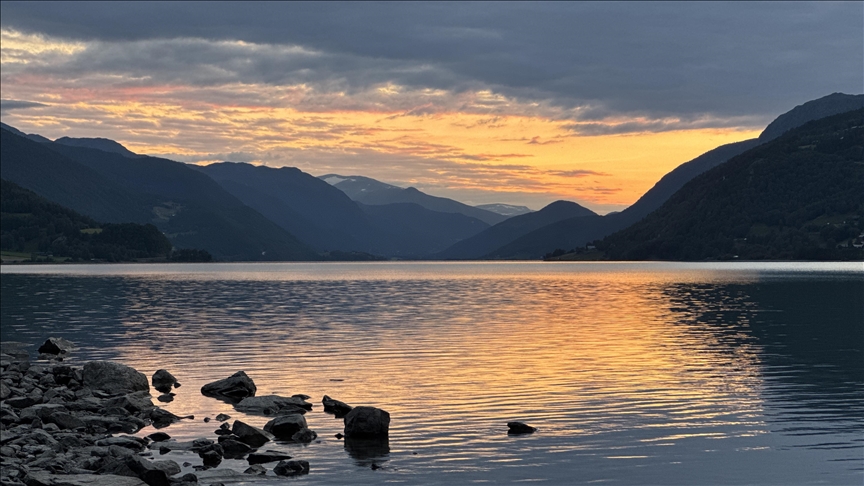Arctic fjord on Svalbard in Norway found to absorb more greenhouse gases than it emits: Study
Scientists say discovery offers 'good news for climate,' though warming threatens long-term balance
 A view of fjords along the route from the capital Oslo to Geiranger, Norway on August 27, 2025 (Photo by Ahmet Talha Duran)
A view of fjords along the route from the capital Oslo to Geiranger, Norway on August 27, 2025 (Photo by Ahmet Talha Duran)
ISTANBUL
A new Norwegian study has found that Kongsfjorden, a fjord on the Arctic archipelago of Svalbard, absorbs more greenhouse gases than it releases, NRK news reported on Friday.
Researchers from the Norwegian Polar Institute, using new nitrogen and carbon measurement models, discovered that the fjord acts as a natural carbon sink.
Their study, published in the journal Scientific Reports, combines years of water sampling with advanced ocean models to estimate the fjord’s “nitrogen and carbon budget.”
“Kongsfjorden takes up more carbon and nitrogen than it emits. If this pattern is repeated in other fjords, it’s good news for both the climate and marine ecosystems,” said Pedro Duarte, senior researcher at the Norwegian Polar Institute and lead author of the study.
Scientists describe Kongsfjorden, located near the research town of Ny-Alesund, as a “living laboratory” that changes faster than most fjords in the Arctic.
“It can serve as a model for understanding wider changes in the Arctic,” said marine biologist Philipp Assmy, who co-authored the study.
The team has monitored the fjord for years, collecting annual water samples along the west coast of Spitsbergen. The data revealed how ocean circulation patterns influence nutrient and carbon levels, key factors in the ocean’s ability to absorb greenhouse gases.
Nitrogen is an essential nutrient for marine plants such as phytoplankton, which help absorb carbon dioxide. Duarte and Assmy said that by understanding nitrogen circulation, scientists can better estimate how much carbon the ocean removes from the atmosphere.
“The ocean supports us by taking up about a quarter of all greenhouse gases emitted each year,” Assmy said, noting that this natural process is increasingly threatened by climate change.
As Arctic waters warm, the fjord’s capacity to absorb greenhouse gases and nutrients could diminish, the researchers warned.
The Norwegian Polar Institute plans to expand its long-term monitoring of Kongsfjorden, part of its mandate from the Ministry of Climate and Environment. “We use science to optimize future monitoring,” Duarte said.
Norwegian Deputy Environment Minister Kristoffer Hansen said that the research provides “important knowledge about how climate change affects marine environments in the Arctic.”
“It is positive that nature absorbs carbon and nutrients, helping to limit the negative effects of emissions,” Hansen said. “But it does not change the fact that we must reduce greenhouse gas emissions.”
Anadolu Agency website contains only a portion of the news stories offered to subscribers in the AA News Broadcasting System (HAS), and in summarized form. Please contact us for subscription options.




